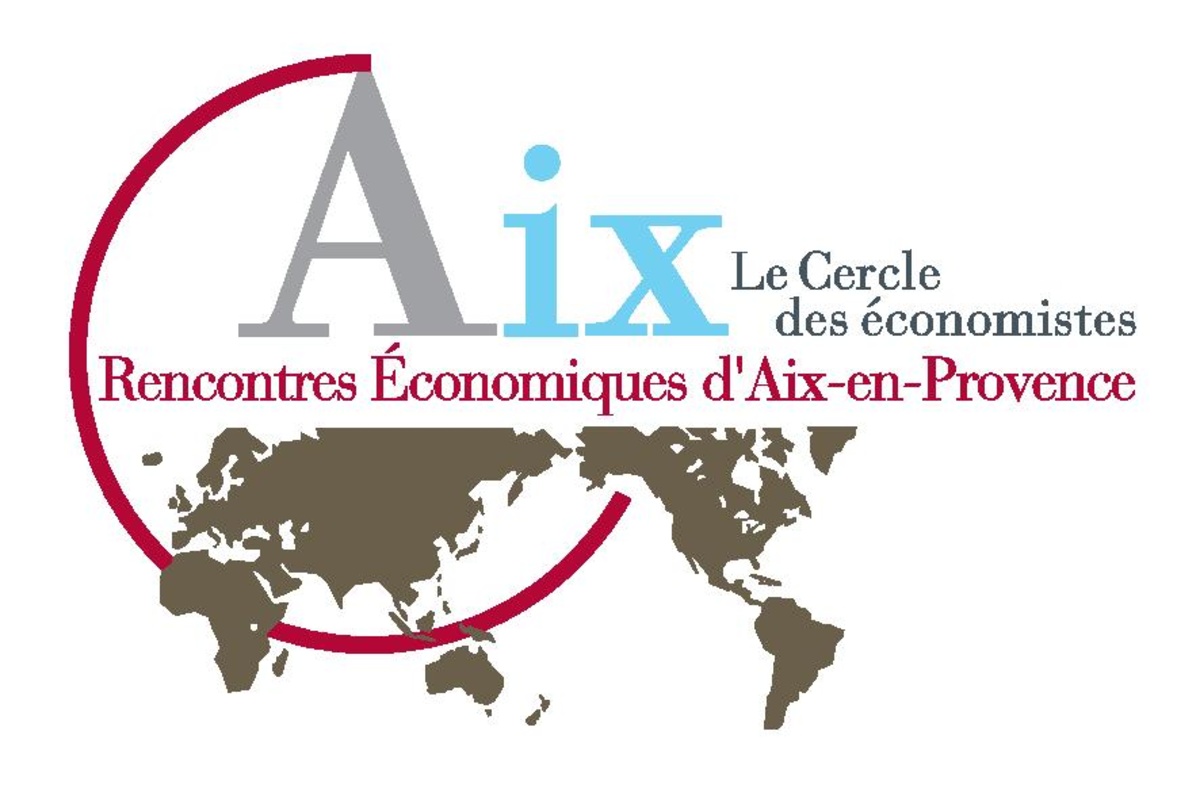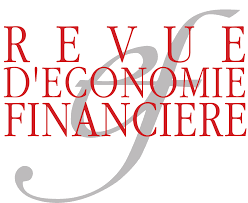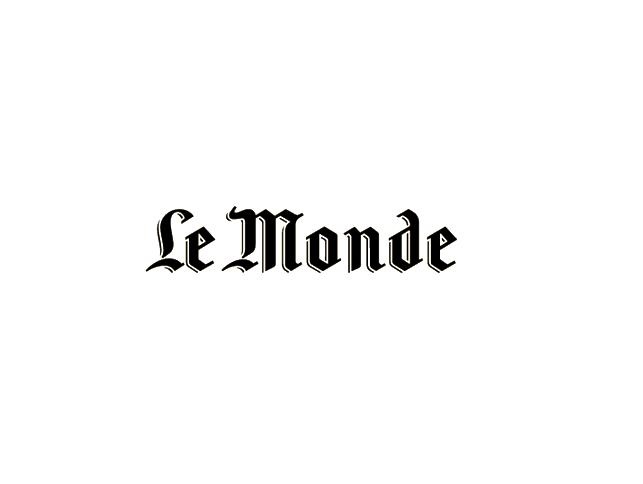SUMMARY
Acknowledgments
Foreword by Michel Léger
General introduction to the issue of negative interest rates by Michel Aglietta and Natacha Valla
Robert Ophèle, Deputy governor of the Banque de France
Maya Atig, Deputy CEO of the Agence France Tresor’s
Jesper Berg, CEO of the Financial Supervisory Authority of Denmark
Philippe Capron, Deputy CEO of Veolia, in charge of finance
Jean-Jacques Daigre, Professor emeritus of Banking and Finance Law
Ramon Fernandez, Deputy CEO of Orange, in charge of the group’s finances and strategy. Ramon Fernandez was previously Director of the Treasury and President of Agence France Tresor’s
Marc Fiorentino, Founder-Director of Euroland Corporate
Hervé Hannoun, former Deputy CEO of the Bank for International Settlements
Philippe Heim, Chief Financial Officer of Société Générale
Denis Kessler, CEO of SCOR SE
Olivier Klein, CEO of BRED, Professor of Financial Economy at HEC
The point of view of Olivier Klein*
What is your opinion on the conceptual complexity of negative growth rates? As a banking “boss” and Professor of Economics, did you ever think you would ever experience such a situation?
The very concept of negative rates rather worrying and so specific that I never thought I’d ever have to deal with it. Certain economic players are adapting quite well to it: some of our institutional customers are now investing money with us at negative rates. They prefer to place it with us at -0.15% rather than at -0.20% elsewhere[1].
Negative rates can be explained by the current macroeconomic set-up. The European Central Bank (ECB) is trying, with these negative rates, to find a balanced level of savings-investment which is more conducive to growth to ward off what some people are describing as the threat of secular stagnation. But this is also “just” an adjustment period after a phase of excessive debt as has often been observed since the 19th century after financial crises. In any event, what the ECB is trying to encourage agents not to just let money sleep and invest and encourage banks to extend credit, but also to encourage debt reduction, by maintaining low rates compared to the nominal growth rate.
The use of negative rates is currently limited to the field of transactions between institutional and financial professionals. This is not yet the case for businesses in France – whereas businesses are also beginning to deposit at negative rates in some European countries.
It also affects a very material limit of the capacity of the system to pass on lower rates throughout the economy: neither the banking system, which needs deposits to make loans, nor the authorities, for fiscal and security reasons, can afford to neglect the appeal that cash could have, especially for households, as an alternative to negative interest bearing deposits. France seems to be relatively preserved from this risk compared to countries like Germany, where the cash culture is much more developed.
Why do you think that there was a need to introduce negative interest rates in the euro zone, while the United Kingdom and the United States, which have nevertheless resorted to unconventional policies, have not had to introduce them?
I believe that this can be explained by the existence of a risk of deflation that is greater in the euro zone than in the United States, that the ECB, quite rightly, wanted to ward off. One reason is the crisis in the euro zone, which led to a second economic downturn just after the 2008 crisis, due to the incomplete nature of our monetary union which creates a slight “deflationary bias”. It is also possible to invoke the lesser impact of the “wealth effect”: in the United States, lower rates quickly led to a recovery in asset values,especially the stock market, which resulted in a reconstruction of the value of household savings – which is, across the Atlantic, much more invested in the markets because of the importance of pension funds. In all, it was necessary to hit even harder on rates in the euro zone. But it is a quantum issue, not an issue of principle: the ECB did not enter into negative territory just for the sake of it, but to cut rates as much as needed, and the Bank of England and the Federal Reserve did not remain in positive territory to avoid negative rates, but because the zero rate was sufficient in their respective cases.
How is the profitability of retail banks impacted by the environment of negative interest rates?
We have to distinguish between the effect of interest rates which are decreasing and that of negative rates. Structurally speaking, banks lend long-term and refinance short-term. In general, as we lend in France, at fixed rates, in the very short-term there is less hysteresis in bank liabilities than in assets – in other words, if rates fall at the same pace for all maturities, the cost of a part of our resources immediately decreases, whereas the product of loans only decreases over time, as our loan portfolio is gradually renewed. An homothetic drop in the rate curve will therefore play in favour of the banks in the first year. Nevertheless, this situation is only temporary, because very quickly, the portfolio entry of new loans granted at lower rates and the amortisation of old loans at higher rates, but also the mortgage renegotiation requests made by private customers, cause a decrease in the rates of our assets which is faster than that of our liabilities, that contain a lot of resources indexed at regulated rates which vary less rapidly. This brings us to a deteriorated intermediation margin rate, but in an acceptable and manageable quantum. Then, eventually, when the rate curve stabilises, if the slope of the curve remained constant, the net interest margin will gradually recover.
What is happening today is different. First of all, the net interest margin is compressed, through the evolution of the differential rate between the long and the short rate, that is to say the slope of the rate curve. For the last two years, central banks have indeed been looking to govern and bring down not just short rates, which they always set more or less directly, but also, which is new, long rates, through policies of quantitative easing (QE) and by clever management of agents’ expectations in the context of forward guidance. This policy works well, leading to a compression of the rate curve, and thus of the interest margin of banking institutions.
Negative rates introduce an additional element, which is frustrating for our business model. Since, for the most part, we do not pass on lower rates below zero to our depositors, the falling cost of our resource comes up against an obstacle.
In summary, the product of our loans, correlated with falling long rates, decreases, while our refinancing has a cost that can no longer decrease in parallel with it, considering the impossibility of getting the bulk of the interest paid on deposits into negative territory. The rate slope is therefore compressed even more. It is easy to see that this situation is very unfavourable for the profitability of our institutions. Our net interest margin, which was able to reach almost 6% in the early nineties, has been levelled off at 2% for years and since 2014-2015 we have entered a further phase of gradual decline, which is going to further accentuate in the next few years, with the amortisation of our old loans at higher rates and the entry into force of new loans at very low rates.
This development will be lasting, and banks must resign themselves to surviving for quite a long time in a context of very low interest margins: the movement cannot, in my opinion, be reversed for at least two or three years since the “renewed steepening” of the rate curve will only take place just in time, given the low potential growth rate of the Euro Zone, and its beneficial effects for us will only be felt through the renewal of our loan portfolios. The very specific monetary conditions we are experiencing – negative rates and QE – seem genuinely welcome to me in terms of the general economy: the ECB had no other choice. But we must be aware that they are specifically unfavourable to banks… But also to insurers, pension funds and all those who need a return on their assets to be able provide the services expected of them.
Are banks therefore being forced to seek new sources of income?
There is no doubt that the decline in interest margins that I have just mentioned has caused us to diversify our sources of income. Of course, the banks can first try to compensate for the erosion of margins with a volume effect on outstanding amounts, but we cannot go very far in this area: either we try to gain market shares – which, by definition, not everyone can do at the same time – or the banks, as an aggregate, rely on the general expansion of the volume of loans in the economy – which is highly seasonal due to the low level of growth.
Banks, if they are considered as an aggregate, can therefore think about playing on higher commissions, that is to say, looking for better and fairer billing for their services. Indeed, we have seen a slight shift in this direction in the past few months. But once again, it’s not as easy as people often imagine.
First of all, the supervision of our activities by the various consumer protection mechanisms limits the opportunities. But, in addition, there is keen competition which does not give much leeway. Furthermore, the context of low interest rates hangs over certain types of commission. It is understandable, for example, that “placement commissions” in the field of life insurance cannot be the same in a context in which contracts make 2.5% or 3% as when the standard remuneration for savers was 5% or 6%. The same applies to asset management. We can therefore see, with many products, our commissions fall progressively with falling interest rates.
The new services still remain. My feeling is that their spectrum is limited by the objective needs and expectations of customers with regard to their banks and through the necessity of maintaining a coherent and fair offer. So we would not seem to be very legitimate as a travel agency or computer salespeople, for example.
That is why many players, who are unable to increase their revenues to offset the erosion of interest margins, are now trying to reduce their operating costs, such as by reducing the number of bank branches. A new, more financial argument now needs to be added to the “technological” argument – the usefulness of branches is eroding since customers are using our digital platforms more and more intensely: if we cannot remunerate the conversion of deposits into loans by a sufficient margin, the cost of large networks of branches becomes prohibitive. If this vision, which I do not necessarily agree with, was to prosper over time, thousands of jobs would potentially be at stake in retail banking. So we can see that the operational impact of the monetary context we are discussing is not negligible! So although there are potential strategies for “coming out on top” for specific banks, the industry as a whole is doomed to have to deal with real profitability difficulties.
Is the compression of returns also forcing banks to take more risks?
You might think so, but this is not the case. The new prudential regulations in fact leave less and less room for taking risks[2].
What are your specific thoughts on the role of prudential ratios in the context of low growth and very low, or even negative rates, that we are currently experiencing?
As a banker and professor of economics, I have long been convinced that it is necessary to implement prudential rules and macro-prudential policies for the simple reason that markets do not self-regulate themselves – this was highlighted in many theoretical contributions, but above all, unfortunately, in practice, with the crisis of 2008. Finance is intrinsically procyclic. The potential for regulation therefore plays a crucial role in avoiding financial instability as much as possible.
But it turns out that the prudential standards put in place since the Basel 2 agreement, which are well founded on many points, also incorporated a problematic procyclic character. The risk calculated by RWA (Risk-Weighted Assets), based on historical measurements, with equal volumes of credit, in fact lowered during the euphoric phase of the cycle, which, all things being equal, made a rise in the leveraging effect of banks and the accompaniment of the increase in the general demand for credit possible.
This then promoted the build up of weak financial situations for both households and businesses, in a context in which the euphoria specifically led borrowers and lenders to underestimate the risk. By the same token, at the time of the turnaround, the established risk reappeared in bulk in the books of banks, which naturally weighed on their willingness to lend, but in addition, the constraints of prudential ratios stretched because the increase in the cost of the risks recorded resulted in a rise in RWA through an equity shortfall, thereby leading to an even stronger decrease of the capacity to lend. This method of banking regulation could then encourage the formation of bubbles, then their bursting, and accentuate the financial cycles. It was therefore necessary to rebuild them, which is what Basel III did, particularly through creating a countercyclical capital buffer.
Are prudential measures also a risk factor, as they contribute to creating a type of bond bubble, particularly with government Securities?
Banks have progressively been faced with a tightening of regulations with stricter solvency ratios since Basel 3: they are being asked to hold more equity for the same RWAs and the weight of the risk in calculating RWAs is stronger than before, especially for loans to businesses or for market risks. In the case of a stronger upturn in the economy, this could be a risk of the insufficient capacity of the banks to support the recovery. Furthermore, the liquidity ratios undeniably favour the fact that banks are investing in sovereign bonds.
Do you mean that the prudential regulations are ultimately leading to credit rationing for businesses?
Up to this time, people have really been wrongly accusing the banks in France. There has been no credit rationing to businesses, and the Bank of France and ECB indicators clearly demonstrate this. Let’s go back to the course of the seven years that have just passed. Much of the decline in the distribution of credit seen in the years following 2008 can be explained by a lower demand for credit: businesses cut their investment spending and borrowed less, because of the changing unfavourable economic conditions which they were facing and their lack of trust in the future. Even today, however, very low, or even negative rates, are not enough alone to make people want to borrow.
It is true, however, that when the real economy was on the ropes after the financial crisis, we were able to observe, for some months, less of the general reluctance to lend that the banks were accused of and greater selectivity, which is, for that matter, is perfectly understandable. Not lending to businesses whose future is seriously compromised is a part of the normal role of banks. It is an economic function of the profession, that it must fully assume: if banks do not fully exercise “monetary restraint”, granting loans to businesses that were destined to disappear, they would generate distortions in the markets of their customers and harm the proper development of other businesses that are healthy and sustainable.
We have now left this period behind. However, with the new liquidity and solvency ratios, it will now be progressively more difficult for banks to follow a trajectory of the demand for credit which would improve significantly.
Why do we find ourselves in this situation, even though the objective of the political and monetary authorities is to facilitate granting credit by any means to promote growth?
The truth is that banks were considered as being at fault for the crisis, which is, in my opinion, a vision that is at the very least fragmented, and doubtlessly false in Europe in any case, even if we can argue that they were inevitably a factor in spreading the crisis. As such, we are now in a post-crisis historically conventional phase of “financial repression” of indebtedness, marked by very low interest rates and tougher demands placed upon banks: we are saying that we must “avoid this” at all costs in the future. This concern is reflected in a number of new or tougher regulations, at the very moment when, in fact, a monetary policy aimed at reviving credit with the use of novel instruments, just like negative rates or quantitative easing, is being mobilised.
The most paradoxical thing is that, although they are aware of this contradiction, central bankers now seem, in order to get out of this, to be inviting the development of disintermediation and securitisation, which were held up to public obloquy a few years ago, purely because of the role they actually played in the accumulation of bad risks in the United States, which ultimately led to the crisis. So we are now seeing hedge funds, assets managers, insurance companies, mutual health organisations and pension managers lending to businesses, even though they do not have the historical expertise of the banks to do. There is a considerable asymmetry of information between these new lenders and those to whom they are lending. Some of them, such as hedge funds, are also barely regulated or not regulated at all.
Should we not, however, be pleased to see that some businesses, particularly some great intermediate size companies, finally have access to the market, particularly through the development of the Euro PP?
In theory, yes. My feeling is, however, that we need to be very careful, because not all medium-sized companies can effectively withstand such financing without endangering themselves, especially because of the depreciation method for such loans. Banks usually ask small and medium enterprises to make one annual repayment by providing them with depreciable loans. This is sound practice: the company therefore knows that it must dedicate part of its annual cash flow to repaying its loans and monitoring its management ratios. Euro PPs are very different because, by using them, businesses can be financed for as long as five years with bullet loans. The system is even more attractive today as both rates and spreads are very low.
In the case of large companies, which issue bonds as part of high annual issuance programmes, financing with bullet loans is in some ways similar to a redeemable loan, since we can see a kind of an amortisation schedule: if, for example, the average horizon of the bonds issued annually is seven years, then 1/7th of the outstanding borrowings must be repaid each year. However, only certain types of medium-sized companies are able to issue Euro PPs on a regular basis. Most therefore create a unique and extended due date ahead of them, which effectively means that when the time comes, they may find themselves facing a wall of debt that they can only overcome if they are able, at that time, to re-borrow the full amount of the loan that they have to repay all at once. There are two disadvantages: firstly, nobody knows what situation the company will find itself in that time and, secondly, over the duration of Euro PP, the cashflow constraint was lifted for it – which in some cases could be crime-inducing.
you mean that only the banks are capable of distributing credit without taking or running undue risks?
I quite obviously believe in the usefulness of banks and market financing coexisting! But I don’t think that the market is suitable enough for smaller companies. The role of banks cannot be reduced because banks have a good knowledge of borrowers and because they keep the risk on their balance sheets, which brings them, in their own interest, not to lend any old how and to “monitor” their customers over time.
We also know that, in the United States, securitisation was one of the factors that facilitated excessive indebtedness in the early 2000s: banks were partly responsible because, by not keeping risks on their books, they were less selective about borrowers and did not “monitor” them afterwards. There is a major problem of incitement to selection in market financing as soon as we leave the case of very large borrowers who can, through credit rating agencies, as well as through a lot of communication on their own situation, afford the cost of financial reporting, thereby reducing the asymmetry of information. This intrinsic fault in securitisation has partially been corrected by some of the Basel 3 provisions, which requires banks to maintain a quota of risks associated with the loans that they securitise.
The momentum towards greater disintermediation that we are currently experiencing could be a factor for increased financial instability, while bank credit itself is a factor of stability if it is properly regulated. In my opinion, the share of banking intermediation determines the level of stability of a financial system as a whole. Indeed, banks do not just mobilise savings to serve investment: these are centres of risk. They take counterparty risks in the credit act and interest rate and liquidity risks in the conversion act upon themselves (converting short maturity savings into longer maturities with average credit). Risks are not created by the banks, but managed by them, so that they provide relief to the economy. They manage them carefully, professionally and in a regulated environment. Markets are useful to the economy, but they leave interest rate credit and liquidity risks to lenders or borrowers, which is quite different!
By increasing the share of disintermediation, we will not reduce the risk, we will move it to a multitude of players that are less well equipped than the banks to manage it. The issue of the proportion between banks and markets, between intermediation and disintermediation, is therefore crucial for financial stability. Just like the quality, relevance and scope of the prudential regulation itself, which are also highly crucial.
However, as you said earlier, sociological and technological developments on the one hand, and the monetary context on the other hand, seem to be threatening the very purpose of banks, on the consumer market at least. Will the retail banking business model survive these shocks?
There are undeniably profound changes to our activity. This invites us to return to the economic constants that justify our existence, while ensuring the changes needed to take account of the “customer revolution” caused by the technological revolution. Private customers have, and will always need, a reliable and professional advisor to talk to them about their life plans and advise them about their main loans – with property leading the way- their savings, their retirement protection… But private customers now require greater convenience in their relationships with banks, such as with the strongly developing use of the Internet and Smartphones. They also want greater relevance of the advice that is given to them. But they still want to have access to a qualified contact person who knows them when they have to make important decisions. Building on human capital, giving more convenience and greater added value to banking advice, while using the technological revolution for both the use of its customers and to redesign their own organization, is certainly a crucial industrial and human challenge in retail banking that must be addressed quickly.
[1] This interview was conducted in November 2015.
[2] The new prudential rules prohibit banks from “playing” on markets with their own funds.





